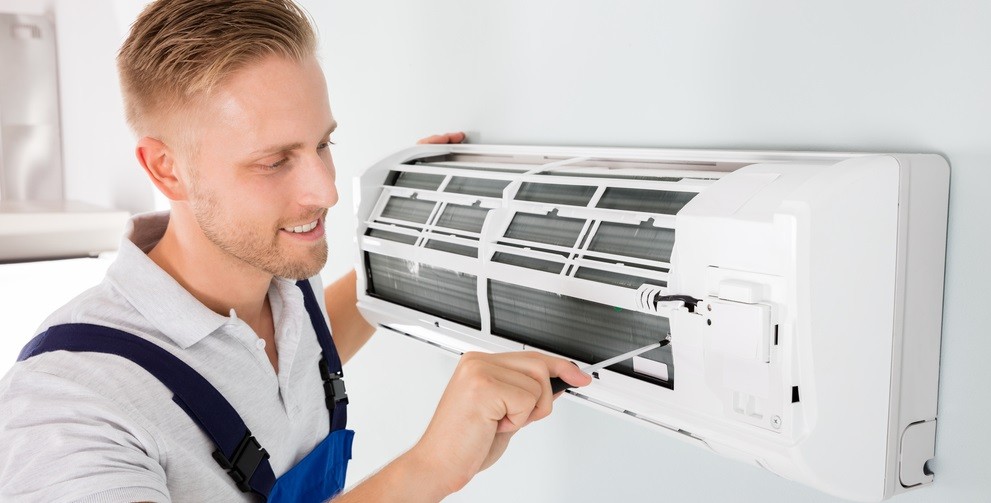
Ductless units or mini splits – they are the bane of many HVAC technicians. The units themselves are quiet, super-efficient, and work very well. Often, technicians will say something like, “I install a lot of these units and they generally work great, but honestly I have no idea what’s really going on inside those things.” It’s a fair enough statement. Most technicians are accustomed to contactors, relays, capacitors, AC voltage motors, and simple I/O controls. There is nothing simple in appearance about the inner workings of a ductless unit.
For starters, we have the board which is located next to a 2nd board which is then located above a 3rd board. There are no contactors or relays. The only capacitors are built into the control boards. Controls? Yes, we have controls, but not the traditional I/O kind we usually think about. Nope, these things talk back and forth. What are they saying? Who knows!
Ductless technology is a fast-growing segment in the HVAC industry. It is evolving into a whole-home solution and bringing with it, great gains in staging using inverter technology. This is where the industry is headed for residential heating and cooling. What began years ago as a window unit without the need for the window has evolved into a multitude of installation options to satisfy the technical needs and aesthetic desires of most homeowners. The root product offering that spurred this segment is the wall-mounted indoor unit. It was originally used to address heating and cooling needs in hard to condition areas like sunrooms and bonus rooms over the garage. These are areas in a home that need more heating and cooling than the remainder of the home and therefore stay uncomfortable … that is until we installed the wall mounted ductless!
The system is composed of an indoor unit that is mounted on a wall and connected to an outdoor unit. The outdoor unit powers the indoor unit through a 14/4 cable that provides both the high voltage power to the indoor wall mount, as well as communication with the outdoor unit. Traditionally there is no thermostat as we think of the concept, but rather just a remote control. It is here that many of our misunderstandings begin.
The remote control is not a thermostat. It does not provide feedback to the unit about what the space temperature is sensing. It is merely a command signal telling the unit what the user programs. It sends a one-way signal; when you select the air conditioning mode and adjust the temperature to 73°, the remote sends a signal with this information to the indoor wall mount telling it the mode of operation (cooling) and the desired room temperature (73°). From that point, the remote control is no longer in play until it is used to give another command. Once used the remote control could be placed in a freezer or in a hot oven and neither would change the operation of the unit itself (full disclosure: do not put the remote in the oven … it will melt). The system will operate on the last command received until it receives a new command.
Once the system receives a command from the remote control then everything else is determined between the indoor and outdoor units. The wall-mounted indoor unit contains two temperature sensors (thermistors). One of these is an ambient temperature sensor that measures the temperature of the air near the wall-mounted unit. The other is a coil temperature sensor that provides feedback to the outdoor unit regarding how warm or cool the coil might be. The system takes the command given from the remote control, analyzes the conditions detected by the ambient sensor versus the command, calculates a perceived room temperature based on an algorithm derived offset from the ambient sensor (performed to account for the wall mount placement location relative to the floor) and then the system determines the necessary capacity in which to begin the cooling or heating operation.
Once operation begins, the system will monitor multiple conditions: the ambient sensor reading indoors as compared to the algorithm derived room temperature, the outdoor temperature, the indoor coil temperature, the compressor discharge temperature, and the refrigerant line temperatures. The computer programming for the system will use this temperature feedback information to determine compressor speed and how much refrigerant to meter for the needed heating or cooling requirement. As this temperature information is continually provided to the computer, the system constantly adjusts operation to meet the indoor space settings.
Once the system achieves its targeted condition based on the last remote-control command received, it will throttle down to a standby mode and maintain those last command conditions until it receives a new command. Through constant information feedback from the indoor and outdoor sensors, the system adjusts and ramps unit capacities up and down in order to meet the desired comfort levels. Many inverter driven systems have capacity ranges between 25-100% of capacity and the systems move up and down that spectrum of capacities as needed based on the steady stream of information being provided.

